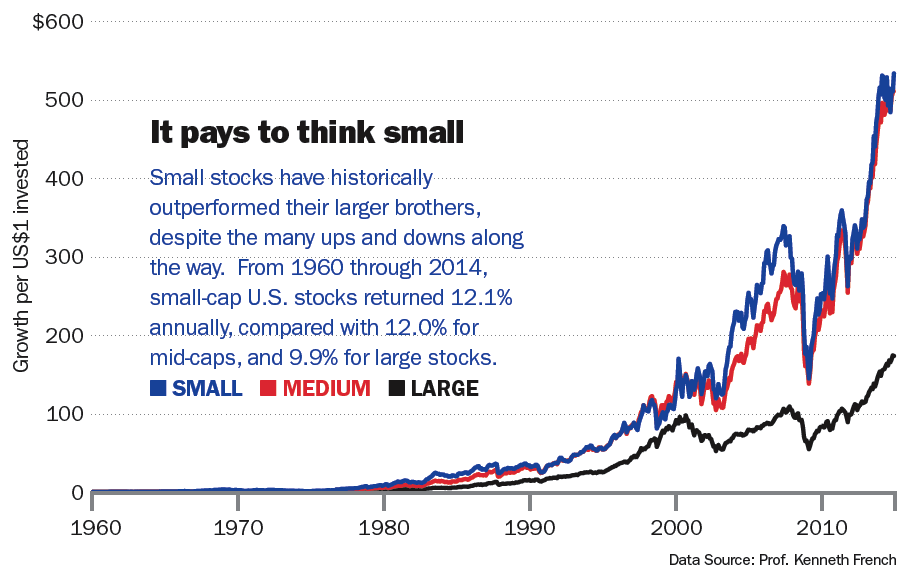The best small cap stocks
Small stocks, BIG returns!
Advertisement
Small stocks, BIG returns!

Subscribe to MoneySense for just $25 »
Professor French’s research prompted us to search for small stocks that pass the value and growth tests we employ each year in the MoneySense Top 500 ranking of large U.S. stocks. Alas, in a reversal of fortune, small stocks lagged big stocks in the U.S. since we started rating them a year ago. The S&P 500 index of large stocks gained 16.5% since last time while the Russell 2000 index, which tracks smaller stocks, climbed 7.2%. The small stocks that made it into our All-Star list last year (by earning two As or at least one A and one B for their appeal as value and growth investments) advanced only 4.7%. While last year’s Small Cap All-Stars didn’t beat the market, we’ve been through many ups and downs in the past and still believe our approach will do well over the long-term. That’s why we’re pleased to present you with our second annual Small Cap 100 report. In it we evaluate 1,000 stocks for their appeal as value investments and growth investments, using the same methodology as our annual Top 500 ranking. But this time the focus is on smaller firms with market capitalizations ranging from roughly $200 million to just over $2 billion. (All figures in U.S. dollars.) We decided to stick to U.S. stocks for a couple of reasons. First, the Canadian small-cap market is dominated by energy and mining companies, which tend to be highly volatile. Second, the selection of stocks is much larger south of the border. While we like small stocks, some tiny firms can cause problems. For instance, some of them trade infrequently and they can suffer from other peculiarities. It’s why we start with stocks that have market capitalizations and revenues of more than $200 million. That might sound like a big amount, but it’s quite small compared to a big company like Apple (AAPL), which earns about $120 million every day. We then grade the next 1,000 companies above our limit (when ranked by market cap) using data from Bloomberg. The smallest stock we looked at this time was Inventure Foods (SNAK), which has a market capitalization of just over $200 million. The largest was DigitalGlobe (DGI), with a market capitalization of a little more than $2.2 billion. If our suspicions are correct, you probably haven’t heard of either one.
Subscribe to MoneySense for just $25 »
Norm Rothery, CFA, PhD, is the founder of StingyInvestor.com. He may own shares of the Small Cap 100 stocks.Share this article Share on Facebook Share on Twitter Share on Linkedin Share on Reddit Share on Email